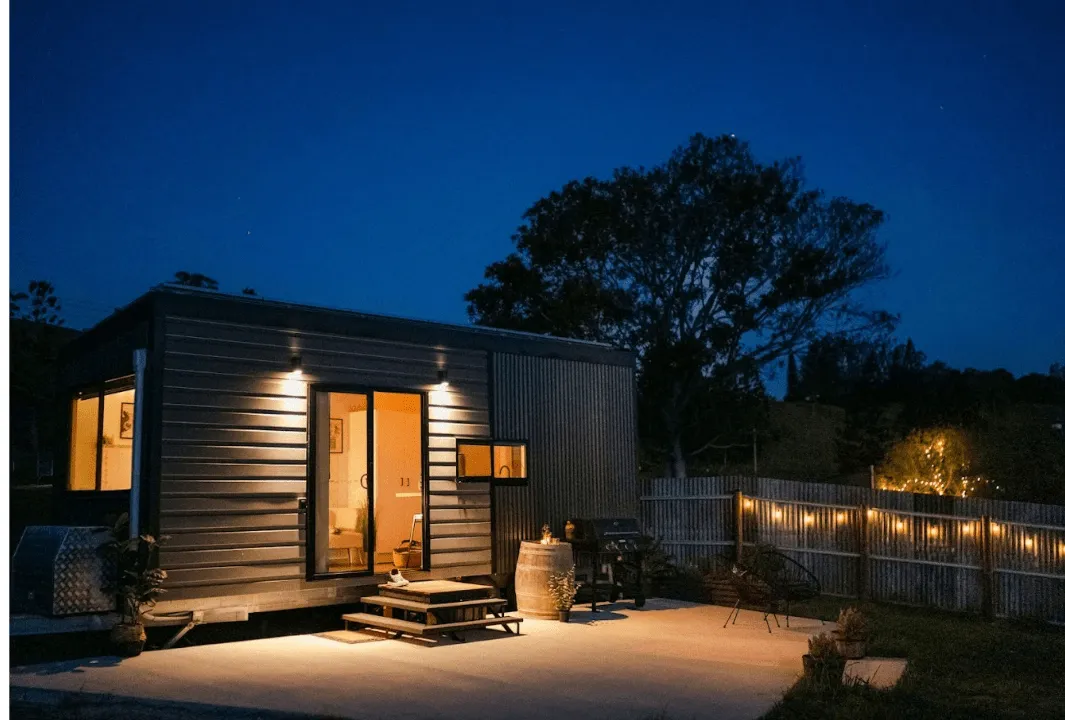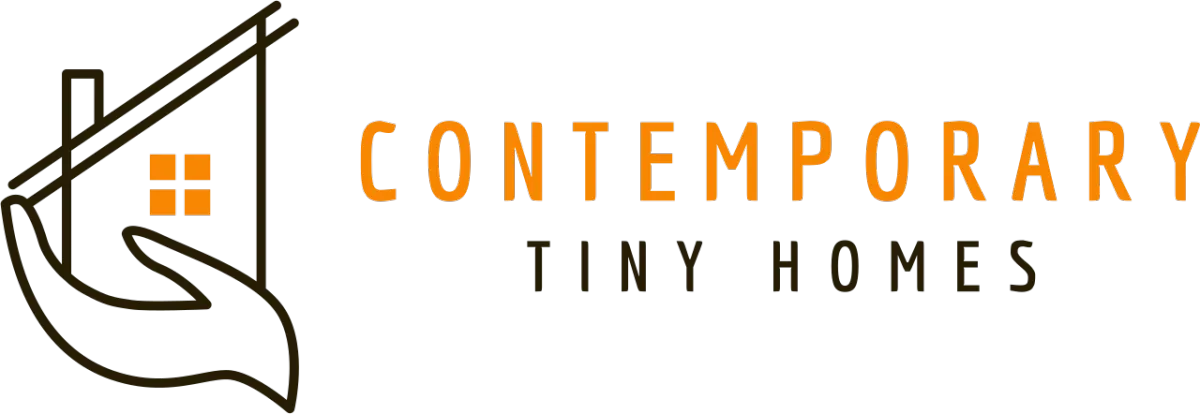Knowledge Center: Your Go-To Resource for ADUs and Tiny Living
Knowledge Center: Your Go-To Resource for ADUs and Tiny Living
Email [email protected]
Phone 860-TINY-HOM (es)

How do I make my tiny home or ADU energy-efficient?
In the realm of sustainable living and innovative housing solutions, achieving energy efficiency in these small living spaces requires planning and strategic design choices. Let's explore the essential principles and practices for making tiny homes and ADUs energy-efficient. We'll cover topics such as insulation, heating and cooling systems, lighting, renewable energy integration, water conservation, and maintenance strategies.
By implementing these techniques, homeowners won’t only reduce their energy consumption and utility costs but also contribute to a greener and more sustainable future.
Importance of Energy Efficiency in Small Living Spaces
When it comes to tiny homes and ADUs, every square inch counts, including energy consumption. Ensuring these spaces are energy-efficient not only reduces utility bills but also minimizes the environmental impact. Let's explore how you can make your tiny abode an energy-saving haven.
Energy-Efficient Design Principles
Passive Solar Design for Natural Heating and Cooling
Harnessing the power of sunlight through passive solar design can significantly reduce the need for artificial heating and cooling in your tiny home or ADU. Strategic placement of windows, thermal mass, and shading elements can help regulate indoor temperatures efficiently.
Optimizing Layout and Orientation for Energy Efficiency
Careful consideration of the layout and orientation of your tiny home or ADU can maximize natural light and ventilation, reducing the reliance on artificial lighting and HVAC systems. Smart design choices can enhance comfort while minimizing energy consumption.
Insulation and Air Sealing Strategies
Types of Insulation for Tiny Homes and ADUs
Proper insulation is key to maintaining a comfortable indoor climate and preventing energy loss in small living spaces. From spray foam to cellulose insulation, choosing the right type for your tiny home or ADU can make a significant difference in energy efficiency.
Sealing Air Leaks to Enhance Energy Performance
Even the tiniest gaps can lead to energy waste in your small living space. Sealing air leaks around doors, windows, and other openings can improve insulation and reduce heat loss, ensuring your tiny home or ADU stays cozy and energy-efficient.
Efficient Heating and Cooling Systems
Choosing the Right HVAC System for Small Spaces
Selecting an appropriately sized and energy-efficient heating, ventilation, and air conditioning (HVAC) system is crucial for maintaining comfort in your tiny home or ADU. Mini-split systems and ductless heat pumps are popular choices for their compact size and high efficiency.
Zoning and Programmable Thermostats for Energy Savings
Implementing zoning systems and programmable thermostats allows you to heat or cool specific areas of your tiny home or ADU only when needed, reducing energy waste. By optimizing temperature control, you can enhance comfort while keeping energy bills in check.
Lighting and Appliance Selection for Energy Savings
LED Lighting and Energy-Efficient Fixtures
Say goodbye to the days of flickering fluorescent bulbs and transition to energy-efficient LED lighting. Not only do LEDs consume less energy, but they also have a longer lifespan, saving you money in the long run. Pair them with energy-efficient fixtures to brighten up your tiny home or ADU in style without draining your energy resources.
Energy Star-rated Appliances and Smart Home Integration
Upgrade your appliances to Energy Star-rated models to cut down on energy consumption. These appliances are designed to be more efficient, helping you save on both your energy bills and the environment. Take it a step further by integrating smart technology into your home, allowing you to monitor and control your energy usage with ease.
Renewable Energy Integration
Solar Panels and Off-Grid Options for Tiny Homes
Harness the power of the sun by installing solar panels on your tiny home or ADU. Not only can solar panels provide clean energy, but they can also help you go off-grid, reducing your reliance on traditional energy sources and decreasing your carbon footprint.
Wind Turbines and Other Renewable Energy Solutions
For those in windy areas, consider incorporating wind turbines as a renewable energy solution. Wind power can complement solar energy, providing you with a diverse mix of renewable resources to power your tiny home sustainably.
Water Conservation Techniques
Low-Flow Fixtures and Water-Saving Appliances
Reduce water wastage by installing low-flow fixtures and using water-saving appliances in your tiny home. These simple swaps can significantly lower your water usage without compromising on functionality, making your living space more eco-friendly.
Monitoring and Maintaining Energy Efficiency
Energy Monitoring Tools and Smart Home Technology
Track your energy usage with monitoring tools to identify areas where you can improve efficiency. Pair these tools with smart home technology for automated energy adjustments, creating a more energy-efficient living environment without the guesswork.
Regular Maintenance Practices for Sustaining Energy Efficiency
Stay on top of regular maintenance tasks to ensure your energy-efficient systems are running smoothly. From cleaning solar panels to checking for water leaks, maintaining your energy-efficient setup will help you maximize savings and sustainability in your tiny home or ADU.
Conclusion
Optimizing energy efficiency in tiny homes and ADUs is not only a practical way to lower energy bills but also a crucial step towards minimizing environmental impact. By incorporating smart design principles, energy-saving technologies, and sustainable practices, homeowners can create comfortable, eco-friendly living spaces that reflect a commitment to a more sustainable lifestyle. With a focus on energy conservation and responsible resource management, tiny home and ADU dwellers can enjoy the benefits of a greener and more efficient living environment for years to come.
FAQs
Are tiny homes and ADUs inherently energy-efficient?
While tiny homes and ADUs are generally more energy-efficient compared to traditional homes due to their smaller size, achieving optimal energy efficiency requires careful planning and implementation of energy-saving strategies.
Is renewable energy integration practical for tiny homes and ADUs?
Yes, renewable energy sources such as solar panels and wind turbines can be effectively utilized in tiny homes and ADUs to reduce reliance on traditional utility grids and enhance sustainability.
How can I monitor and maintain energy efficiency in a tiny home or ADU?
Utilizing energy monitoring tools, conducting regular maintenance checks on insulation, HVAC systems, and appliances, and staying informed about energy-saving practices are key to sustaining energy efficiency in small living spaces.

Copyright 2025. All rights reserved. Norwalk, CT
Connecticut's New Home Construction Contractor License: #NHC.0017654
EPA Lead-Safe Certified NAT-F269966-1


